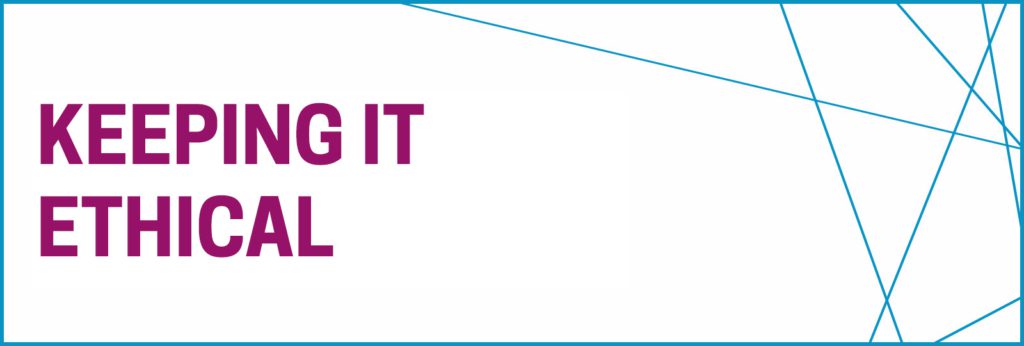Keeping it Ethical is our weekly blog series highlighting the 33 Principles for Good Governance and Ethical Practice. Throughout the series, we hope to highlight the importance of each Principle and the helpful resources associated with it and learn more from you about how you’ve incorporated these Principles into your charitable organization.
A few blogs ago, we took a look at the role of nonprofits boards. As you’d expect, generally speaking, your board’s job is to make sure your organization has a vision and mission, is protecting its assets, and has the right staff and appropriate resources in place so you can achieve your goals.
But what about your board? While your board’s checking on you, who’s checking to make sure your board is “aboveboard” in meeting its duties and obligations?
Best practice calls for board members to evaluate their performance regularly. Many boards conduct self-assessments annually, and all boards should conduct evaluations at least every three years, bearing in mind board service terms or regular long-range planning cycles. During these self-assessments, board members should consider what’s going well, what needs improvement, and whether and how their interaction with your organization’s leadership can be strengthened.
But that brings up a question: Can board members impartially evaluate themselves? And what if an underperforming board member needs to be politely shown the door? Kind of screams awkward, right?
Well, there may not be an app for that, but there’s certainly guidance, which is usually included in the organizations bylaws. To avoid what could be an uncomfortable situation, boards often delegate board member evaluations to their executive committees, or to a separate governance or board development committee. Board members with evaluation responsibility should be empowered to discuss performance problems with individual members to determine whether the issue can be corrected, or whether the actions of the board member are such that he or she needs to resign or be removed from the board. Decisions about whether or not to remove a board member are generally made by the full board or the organization’s members.
There are lots of print and online tools available on the design board evaluations or self-assessment processes that best meet your organization’s needs. Here are just a few:
- Best Practices for Board Evaluations, BoardEffect
- Assessing Performance, BoardSource
- Self-Assessments for Nonprofit Boards, National Council on Nonprofits
Find even more resources and learn more about Principle 16 and associated resources.
Do you know of additional resources that you’d like to share that supports Principle 16? Let us know about the in the comments section below, along with other thoughts you’d like to pass along. You can also use #npethics on social media.



